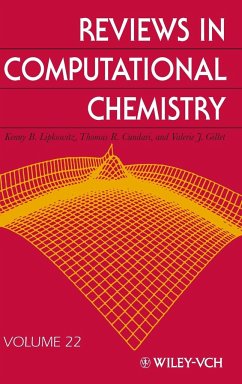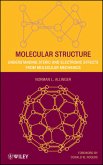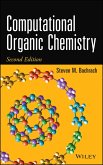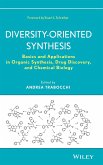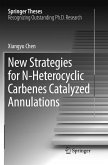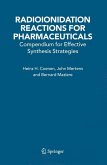Kenny B. Lipkowitz
Reviews Computational V22
Herausgegeben von Lipkowitz, Kenneth B.; Cundari, Thomas R.; Gillet, Valerie J.; Boyd, Donald B.
Kenny B. Lipkowitz
Reviews Computational V22
Herausgegeben von Lipkowitz, Kenneth B.; Cundari, Thomas R.; Gillet, Valerie J.; Boyd, Donald B.
- Gebundenes Buch
- Merkliste
- Auf die Merkliste
- Bewerten Bewerten
- Teilen
- Produkt teilen
- Produkterinnerung
- Produkterinnerung
FROM REVIEWS OF THE SERIES
"Reviews in Computational Chemistry remains the most valuablereference to methods and techniques in computationalchemistry." -JOURNAL OF MOLECULAR GRAPHICS AND MODELLING
"One cannot generally do better than to try to find an appropriatearticle in the highly successful Reviews in ComputationalChemistry. The basic philosophy of the editors seems to be to helpthe authors produce chapters that are complete, accurate, clear,and accessible to experimentalists (in particular) and othernonspecialists (in general)." -JOURNAL OF THE AMERICAN CHEMICAL SOCIETY
Andere Kunden interessierten sich auch für
![Molecular Structure Molecular Structure]() Norman L AllingerMolecular Structure144,99 €
Norman L AllingerMolecular Structure144,99 €![Computational Organic Chemistry Computational Organic Chemistry]() Steven M. BachrachComputational Organic Chemistry145,99 €
Steven M. BachrachComputational Organic Chemistry145,99 €![Computational Methods in Organometallic Catalysis Computational Methods in Organometallic Catalysis]() Yu LanComputational Methods in Organometallic Catalysis133,99 €
Yu LanComputational Methods in Organometallic Catalysis133,99 €![Diversity-Oriented Synthesis Diversity-Oriented Synthesis]() Andrea TrabocchiDiversity-Oriented Synthesis190,99 €
Andrea TrabocchiDiversity-Oriented Synthesis190,99 €![Organic Stereochemistry Organic Stereochemistry]() Hua-Jie ZhuOrganic Stereochemistry146,99 €
Hua-Jie ZhuOrganic Stereochemistry146,99 €![New Strategies for N-Heterocyclic Carbenes Catalyzed Annulations New Strategies for N-Heterocyclic Carbenes Catalyzed Annulations]() Xiangyu ChenNew Strategies for N-Heterocyclic Carbenes Catalyzed Annulations75,99 €
Xiangyu ChenNew Strategies for N-Heterocyclic Carbenes Catalyzed Annulations75,99 €![Radioionidation Reactions for Pharmaceuticals Radioionidation Reactions for Pharmaceuticals]() H.H. CoenenRadioionidation Reactions for Pharmaceuticals75,99 €
H.H. CoenenRadioionidation Reactions for Pharmaceuticals75,99 €-
-
-
FROM REVIEWS OF THE SERIES
"Reviews in Computational Chemistry remains the most valuablereference to methods and techniques in computationalchemistry."
-JOURNAL OF MOLECULAR GRAPHICS AND MODELLING
"One cannot generally do better than to try to find an appropriatearticle in the highly successful Reviews in ComputationalChemistry. The basic philosophy of the editors seems to be to helpthe authors produce chapters that are complete, accurate, clear,and accessible to experimentalists (in particular) and othernonspecialists (in general)."
-JOURNAL OF THE AMERICAN CHEMICAL SOCIETY
Hinweis: Dieser Artikel kann nur an eine deutsche Lieferadresse ausgeliefert werden.
"Reviews in Computational Chemistry remains the most valuablereference to methods and techniques in computationalchemistry."
-JOURNAL OF MOLECULAR GRAPHICS AND MODELLING
"One cannot generally do better than to try to find an appropriatearticle in the highly successful Reviews in ComputationalChemistry. The basic philosophy of the editors seems to be to helpthe authors produce chapters that are complete, accurate, clear,and accessible to experimentalists (in particular) and othernonspecialists (in general)."
-JOURNAL OF THE AMERICAN CHEMICAL SOCIETY
Hinweis: Dieser Artikel kann nur an eine deutsche Lieferadresse ausgeliefert werden.
Produktdetails
- Produktdetails
- Reviews in Computational Chemistry Vol.22
- Verlag: Wiley & Sons
- Artikelnr. des Verlages: 14677938000
- 1. Auflage
- Seitenzahl: 392
- Erscheinungstermin: 1. Februar 2006
- Englisch
- Abmessung: 240mm x 161mm x 25mm
- Gewicht: 659g
- ISBN-13: 9780471779384
- ISBN-10: 0471779385
- Artikelnr.: 22154522
- Herstellerkennzeichnung
- Libri GmbH
- Europaallee 1
- 36244 Bad Hersfeld
- gpsr@libri.de
- Reviews in Computational Chemistry Vol.22
- Verlag: Wiley & Sons
- Artikelnr. des Verlages: 14677938000
- 1. Auflage
- Seitenzahl: 392
- Erscheinungstermin: 1. Februar 2006
- Englisch
- Abmessung: 240mm x 161mm x 25mm
- Gewicht: 659g
- ISBN-13: 9780471779384
- ISBN-10: 0471779385
- Artikelnr.: 22154522
- Herstellerkennzeichnung
- Libri GmbH
- Europaallee 1
- 36244 Bad Hersfeld
- gpsr@libri.de
Kenny B. Lipkowitz is a recently retired Professor of Chemistry from North Dakota State University. Thomas R. Cundari is Professor of Chemistry at the University of Memphis. Valerie Gillet is a Professor in the Department of Information Studies at the University of Sheffield. Donald B. Boyd was apponted Research Professor of Chemistry at Indiana University - Purdue University Indianapolis in 1994. He has published over 100 refereed journal papers and book chapters.
1. Protein Structure Classification (Patrice Koehl).
Introduction.
Classification and Biology.
The Biomolecular Revolution.
Basic Principles of Protein Structure.
Visualization.
Protein Building Blocks.
Protein Structure Hierarchy.
Three Types of Proteins.
Geometry of Globular Proteins.
Protein Domains.
Resources on Protein Structures.
Protein Structure Comparison.
Automatic Identification of Protein Structural Domains.
The Rigid-Body Transformation Problem.
Protein Structure Superposition.
cRMS: An Ambiguous Measure of Similarity.
Differential Geometry and Protein Structure Comparison.
Upcoming Challenges for Protein Structure Comparison.
Protein Structure Classification.
The Structure Classification of Proteins (SCOP).
The CATH Classification.
The DALI Domain Dictionary (DDD).
Comparing SCOP, CATH, and DDD.
Conclusions.
Acknowledgments.
Appendix.
References.
2. Comparative Protein Modeling (Emilio Xavier Esposito, Dror Tobi, and
Jeffry D. Madura).
Introduction.
Anatomy of a Comparative Model.
Step 1: Searching for Related Sequences and Structures.
Expert Protein Analysis System (ExPASy).
BLAST and PSI-BLAST.
Protein Data Bank (PDB).
Sequence Alignment and Modeling System with Hidden Markov Models.
Threading.
Threader.
Example: Finding Related Sequences and 3-D Structures.
Step 2: Sequence Alignment.
Preparing the Sequences.
Alignment Basics.
Similarity Matrices.
Clustal.
Tree-Based Consistency Objective Function for Alignment Evaluation
(T-Coffee).
Divide-and-Conquer Alignment (DCA).
Example: Aligning Sequences.
Step 3: Selecting Templates and Improving Alignments.
Selecting Templates.
Improving Sequence Alignments With Primary and Secondary Structure
Analysis.
Example: Aligning the Target to the Selected Template.
Step 4: Constructing Protein Models.
Satisfaction of Spatial Restraints.
Segment Match Modeling.
Multiple Template Method.
3D-JIGSAW.
Overall Protein Model Construction Methods.
Example: Constructing a Protein Model.
Step 5: Refinement of Protein Models.
Side-Chains with Rotamer Library (SCWRL).
Energy Minimization.
Molecular Dynamics.
Molecular Dynamics with Simulated Annealing.
Step 6: Evaluating Protein Models.
PROCHECK.
Verify3D.
ERRAT.
Protein Structure Analysis (ProSa).
Protein Volume Evaluation (PROVE).
Model Clustering Analysis.
Example: Evaluation of Protein Models.
Conclusions.
References.
3. Simulations of Protein Folding (Joan-Emma Shea, Miriam R. Friedel, and
Andrij Baumketner).
Introduction.
Theoretical Framework.
Energy Landscape Theory.
Thermodynamics and Kinetics of Folding: Two-State and Multistate Folders.
Protein Models.
Introduction and General Simulation Techniques.
Coarse-Grained Protein Models.
Fully Atomic Simulations.
Advanced Topics: The Transition State Ensemble for Folding.
Transition State and Two-State Kinetics.
Methods for Identifying the TSE.
Conclusions and Future Directions.
Acknowledgments.
References.
4. The Simulation of Ionic Charge Transport in Biological Ion Channels: An
Introduction to Numerical Methods (Marco Saraniti, Shela Aboud, and Robert
Eisenberg).
Introduction.
System Components.
Time and Space Scale.
Experiments.
Electrostatics.
Long-Range Interaction.
Short-Range Interaction.
Boundary Conditions.
Particle-Based Simulation.
Implicit Solvent: Brownian Dynamics.
Explicit Solvent: Molecular Dynamics.
Flux-Based Simulation.
Nernst-Planck Equation.
The Poisson-Nernst-Planck (NP) Method.
Hierarchical Simulation Schemes.
Future Directions and Concluding Remarks.
References.
5. Wavelets in Chemistry and Chemoinformatics (C. Matthew Sundling,
Nagamani Sukumar, Hongmei Zhang, Mark J. Embrechts, and Curt M. Breneman).
Preface.
Introduction to Wavelets.
Fourier Transform.
Continuous Fourier Transform.
Short-Time Fourier Transformation.
Wavelet Transform.
Continuous Wavelet Transform.
Discrete Wavelet Transform.
Wavelet Packet Transform.
Wavelets vs. Fourier Transforms: A Summary.
Application of Wavelets in Chemistry.
Smoothing and Denoising.
Signal Feature Isolation.
Signal Compression.
Quantum Chemistry.
Classification, Regression, and QSAR/QSPR.
Summary.
References.
Author Index.
Subject Index.
Introduction.
Classification and Biology.
The Biomolecular Revolution.
Basic Principles of Protein Structure.
Visualization.
Protein Building Blocks.
Protein Structure Hierarchy.
Three Types of Proteins.
Geometry of Globular Proteins.
Protein Domains.
Resources on Protein Structures.
Protein Structure Comparison.
Automatic Identification of Protein Structural Domains.
The Rigid-Body Transformation Problem.
Protein Structure Superposition.
cRMS: An Ambiguous Measure of Similarity.
Differential Geometry and Protein Structure Comparison.
Upcoming Challenges for Protein Structure Comparison.
Protein Structure Classification.
The Structure Classification of Proteins (SCOP).
The CATH Classification.
The DALI Domain Dictionary (DDD).
Comparing SCOP, CATH, and DDD.
Conclusions.
Acknowledgments.
Appendix.
References.
2. Comparative Protein Modeling (Emilio Xavier Esposito, Dror Tobi, and
Jeffry D. Madura).
Introduction.
Anatomy of a Comparative Model.
Step 1: Searching for Related Sequences and Structures.
Expert Protein Analysis System (ExPASy).
BLAST and PSI-BLAST.
Protein Data Bank (PDB).
Sequence Alignment and Modeling System with Hidden Markov Models.
Threading.
Threader.
Example: Finding Related Sequences and 3-D Structures.
Step 2: Sequence Alignment.
Preparing the Sequences.
Alignment Basics.
Similarity Matrices.
Clustal.
Tree-Based Consistency Objective Function for Alignment Evaluation
(T-Coffee).
Divide-and-Conquer Alignment (DCA).
Example: Aligning Sequences.
Step 3: Selecting Templates and Improving Alignments.
Selecting Templates.
Improving Sequence Alignments With Primary and Secondary Structure
Analysis.
Example: Aligning the Target to the Selected Template.
Step 4: Constructing Protein Models.
Satisfaction of Spatial Restraints.
Segment Match Modeling.
Multiple Template Method.
3D-JIGSAW.
Overall Protein Model Construction Methods.
Example: Constructing a Protein Model.
Step 5: Refinement of Protein Models.
Side-Chains with Rotamer Library (SCWRL).
Energy Minimization.
Molecular Dynamics.
Molecular Dynamics with Simulated Annealing.
Step 6: Evaluating Protein Models.
PROCHECK.
Verify3D.
ERRAT.
Protein Structure Analysis (ProSa).
Protein Volume Evaluation (PROVE).
Model Clustering Analysis.
Example: Evaluation of Protein Models.
Conclusions.
References.
3. Simulations of Protein Folding (Joan-Emma Shea, Miriam R. Friedel, and
Andrij Baumketner).
Introduction.
Theoretical Framework.
Energy Landscape Theory.
Thermodynamics and Kinetics of Folding: Two-State and Multistate Folders.
Protein Models.
Introduction and General Simulation Techniques.
Coarse-Grained Protein Models.
Fully Atomic Simulations.
Advanced Topics: The Transition State Ensemble for Folding.
Transition State and Two-State Kinetics.
Methods for Identifying the TSE.
Conclusions and Future Directions.
Acknowledgments.
References.
4. The Simulation of Ionic Charge Transport in Biological Ion Channels: An
Introduction to Numerical Methods (Marco Saraniti, Shela Aboud, and Robert
Eisenberg).
Introduction.
System Components.
Time and Space Scale.
Experiments.
Electrostatics.
Long-Range Interaction.
Short-Range Interaction.
Boundary Conditions.
Particle-Based Simulation.
Implicit Solvent: Brownian Dynamics.
Explicit Solvent: Molecular Dynamics.
Flux-Based Simulation.
Nernst-Planck Equation.
The Poisson-Nernst-Planck (NP) Method.
Hierarchical Simulation Schemes.
Future Directions and Concluding Remarks.
References.
5. Wavelets in Chemistry and Chemoinformatics (C. Matthew Sundling,
Nagamani Sukumar, Hongmei Zhang, Mark J. Embrechts, and Curt M. Breneman).
Preface.
Introduction to Wavelets.
Fourier Transform.
Continuous Fourier Transform.
Short-Time Fourier Transformation.
Wavelet Transform.
Continuous Wavelet Transform.
Discrete Wavelet Transform.
Wavelet Packet Transform.
Wavelets vs. Fourier Transforms: A Summary.
Application of Wavelets in Chemistry.
Smoothing and Denoising.
Signal Feature Isolation.
Signal Compression.
Quantum Chemistry.
Classification, Regression, and QSAR/QSPR.
Summary.
References.
Author Index.
Subject Index.
1. Protein Structure Classification (Patrice Koehl).
Introduction.
Classification and Biology.
The Biomolecular Revolution.
Basic Principles of Protein Structure.
Visualization.
Protein Building Blocks.
Protein Structure Hierarchy.
Three Types of Proteins.
Geometry of Globular Proteins.
Protein Domains.
Resources on Protein Structures.
Protein Structure Comparison.
Automatic Identification of Protein Structural Domains.
The Rigid-Body Transformation Problem.
Protein Structure Superposition.
cRMS: An Ambiguous Measure of Similarity.
Differential Geometry and Protein Structure Comparison.
Upcoming Challenges for Protein Structure Comparison.
Protein Structure Classification.
The Structure Classification of Proteins (SCOP).
The CATH Classification.
The DALI Domain Dictionary (DDD).
Comparing SCOP, CATH, and DDD.
Conclusions.
Acknowledgments.
Appendix.
References.
2. Comparative Protein Modeling (Emilio Xavier Esposito, Dror Tobi, and
Jeffry D. Madura).
Introduction.
Anatomy of a Comparative Model.
Step 1: Searching for Related Sequences and Structures.
Expert Protein Analysis System (ExPASy).
BLAST and PSI-BLAST.
Protein Data Bank (PDB).
Sequence Alignment and Modeling System with Hidden Markov Models.
Threading.
Threader.
Example: Finding Related Sequences and 3-D Structures.
Step 2: Sequence Alignment.
Preparing the Sequences.
Alignment Basics.
Similarity Matrices.
Clustal.
Tree-Based Consistency Objective Function for Alignment Evaluation
(T-Coffee).
Divide-and-Conquer Alignment (DCA).
Example: Aligning Sequences.
Step 3: Selecting Templates and Improving Alignments.
Selecting Templates.
Improving Sequence Alignments With Primary and Secondary Structure
Analysis.
Example: Aligning the Target to the Selected Template.
Step 4: Constructing Protein Models.
Satisfaction of Spatial Restraints.
Segment Match Modeling.
Multiple Template Method.
3D-JIGSAW.
Overall Protein Model Construction Methods.
Example: Constructing a Protein Model.
Step 5: Refinement of Protein Models.
Side-Chains with Rotamer Library (SCWRL).
Energy Minimization.
Molecular Dynamics.
Molecular Dynamics with Simulated Annealing.
Step 6: Evaluating Protein Models.
PROCHECK.
Verify3D.
ERRAT.
Protein Structure Analysis (ProSa).
Protein Volume Evaluation (PROVE).
Model Clustering Analysis.
Example: Evaluation of Protein Models.
Conclusions.
References.
3. Simulations of Protein Folding (Joan-Emma Shea, Miriam R. Friedel, and
Andrij Baumketner).
Introduction.
Theoretical Framework.
Energy Landscape Theory.
Thermodynamics and Kinetics of Folding: Two-State and Multistate Folders.
Protein Models.
Introduction and General Simulation Techniques.
Coarse-Grained Protein Models.
Fully Atomic Simulations.
Advanced Topics: The Transition State Ensemble for Folding.
Transition State and Two-State Kinetics.
Methods for Identifying the TSE.
Conclusions and Future Directions.
Acknowledgments.
References.
4. The Simulation of Ionic Charge Transport in Biological Ion Channels: An
Introduction to Numerical Methods (Marco Saraniti, Shela Aboud, and Robert
Eisenberg).
Introduction.
System Components.
Time and Space Scale.
Experiments.
Electrostatics.
Long-Range Interaction.
Short-Range Interaction.
Boundary Conditions.
Particle-Based Simulation.
Implicit Solvent: Brownian Dynamics.
Explicit Solvent: Molecular Dynamics.
Flux-Based Simulation.
Nernst-Planck Equation.
The Poisson-Nernst-Planck (NP) Method.
Hierarchical Simulation Schemes.
Future Directions and Concluding Remarks.
References.
5. Wavelets in Chemistry and Chemoinformatics (C. Matthew Sundling,
Nagamani Sukumar, Hongmei Zhang, Mark J. Embrechts, and Curt M. Breneman).
Preface.
Introduction to Wavelets.
Fourier Transform.
Continuous Fourier Transform.
Short-Time Fourier Transformation.
Wavelet Transform.
Continuous Wavelet Transform.
Discrete Wavelet Transform.
Wavelet Packet Transform.
Wavelets vs. Fourier Transforms: A Summary.
Application of Wavelets in Chemistry.
Smoothing and Denoising.
Signal Feature Isolation.
Signal Compression.
Quantum Chemistry.
Classification, Regression, and QSAR/QSPR.
Summary.
References.
Author Index.
Subject Index.
Introduction.
Classification and Biology.
The Biomolecular Revolution.
Basic Principles of Protein Structure.
Visualization.
Protein Building Blocks.
Protein Structure Hierarchy.
Three Types of Proteins.
Geometry of Globular Proteins.
Protein Domains.
Resources on Protein Structures.
Protein Structure Comparison.
Automatic Identification of Protein Structural Domains.
The Rigid-Body Transformation Problem.
Protein Structure Superposition.
cRMS: An Ambiguous Measure of Similarity.
Differential Geometry and Protein Structure Comparison.
Upcoming Challenges for Protein Structure Comparison.
Protein Structure Classification.
The Structure Classification of Proteins (SCOP).
The CATH Classification.
The DALI Domain Dictionary (DDD).
Comparing SCOP, CATH, and DDD.
Conclusions.
Acknowledgments.
Appendix.
References.
2. Comparative Protein Modeling (Emilio Xavier Esposito, Dror Tobi, and
Jeffry D. Madura).
Introduction.
Anatomy of a Comparative Model.
Step 1: Searching for Related Sequences and Structures.
Expert Protein Analysis System (ExPASy).
BLAST and PSI-BLAST.
Protein Data Bank (PDB).
Sequence Alignment and Modeling System with Hidden Markov Models.
Threading.
Threader.
Example: Finding Related Sequences and 3-D Structures.
Step 2: Sequence Alignment.
Preparing the Sequences.
Alignment Basics.
Similarity Matrices.
Clustal.
Tree-Based Consistency Objective Function for Alignment Evaluation
(T-Coffee).
Divide-and-Conquer Alignment (DCA).
Example: Aligning Sequences.
Step 3: Selecting Templates and Improving Alignments.
Selecting Templates.
Improving Sequence Alignments With Primary and Secondary Structure
Analysis.
Example: Aligning the Target to the Selected Template.
Step 4: Constructing Protein Models.
Satisfaction of Spatial Restraints.
Segment Match Modeling.
Multiple Template Method.
3D-JIGSAW.
Overall Protein Model Construction Methods.
Example: Constructing a Protein Model.
Step 5: Refinement of Protein Models.
Side-Chains with Rotamer Library (SCWRL).
Energy Minimization.
Molecular Dynamics.
Molecular Dynamics with Simulated Annealing.
Step 6: Evaluating Protein Models.
PROCHECK.
Verify3D.
ERRAT.
Protein Structure Analysis (ProSa).
Protein Volume Evaluation (PROVE).
Model Clustering Analysis.
Example: Evaluation of Protein Models.
Conclusions.
References.
3. Simulations of Protein Folding (Joan-Emma Shea, Miriam R. Friedel, and
Andrij Baumketner).
Introduction.
Theoretical Framework.
Energy Landscape Theory.
Thermodynamics and Kinetics of Folding: Two-State and Multistate Folders.
Protein Models.
Introduction and General Simulation Techniques.
Coarse-Grained Protein Models.
Fully Atomic Simulations.
Advanced Topics: The Transition State Ensemble for Folding.
Transition State and Two-State Kinetics.
Methods for Identifying the TSE.
Conclusions and Future Directions.
Acknowledgments.
References.
4. The Simulation of Ionic Charge Transport in Biological Ion Channels: An
Introduction to Numerical Methods (Marco Saraniti, Shela Aboud, and Robert
Eisenberg).
Introduction.
System Components.
Time and Space Scale.
Experiments.
Electrostatics.
Long-Range Interaction.
Short-Range Interaction.
Boundary Conditions.
Particle-Based Simulation.
Implicit Solvent: Brownian Dynamics.
Explicit Solvent: Molecular Dynamics.
Flux-Based Simulation.
Nernst-Planck Equation.
The Poisson-Nernst-Planck (NP) Method.
Hierarchical Simulation Schemes.
Future Directions and Concluding Remarks.
References.
5. Wavelets in Chemistry and Chemoinformatics (C. Matthew Sundling,
Nagamani Sukumar, Hongmei Zhang, Mark J. Embrechts, and Curt M. Breneman).
Preface.
Introduction to Wavelets.
Fourier Transform.
Continuous Fourier Transform.
Short-Time Fourier Transformation.
Wavelet Transform.
Continuous Wavelet Transform.
Discrete Wavelet Transform.
Wavelet Packet Transform.
Wavelets vs. Fourier Transforms: A Summary.
Application of Wavelets in Chemistry.
Smoothing and Denoising.
Signal Feature Isolation.
Signal Compression.
Quantum Chemistry.
Classification, Regression, and QSAR/QSPR.
Summary.
References.
Author Index.
Subject Index.

